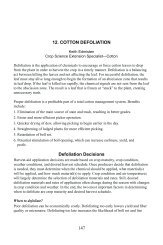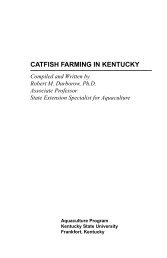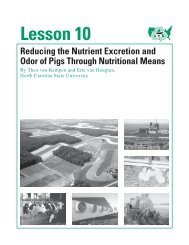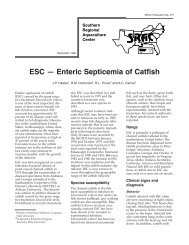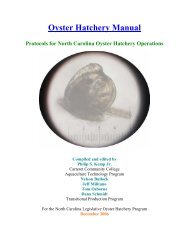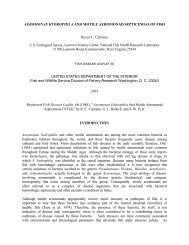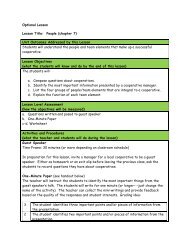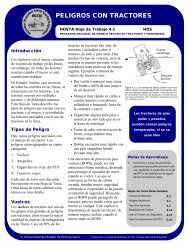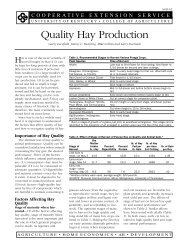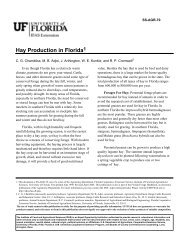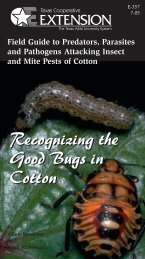Dryland Pastures in Montana and Wyoming - MSU Extension
Dryland Pastures in Montana and Wyoming - MSU Extension
Dryland Pastures in Montana and Wyoming - MSU Extension
You also want an ePaper? Increase the reach of your titles
YUMPU automatically turns print PDFs into web optimized ePapers that Google loves.
3. Cost/benefit analysis<br />
❐ Re-exam<strong>in</strong>e the seed<strong>in</strong>g objectives if expected costs exceed expected benefits<br />
with<strong>in</strong> a selected time frame.<br />
❐ Cont<strong>in</strong>ue the plann<strong>in</strong>g process if expected benefits exceed costs.<br />
❐ Consider benefit duration (longevity of seed<strong>in</strong>g).<br />
Selection of Species <strong>and</strong> Cultivars<br />
Species differ <strong>in</strong> their requirements for moisture, nutrients, soils <strong>and</strong> light.<br />
Likewise, species vary <strong>in</strong> seed germ<strong>in</strong>ation, establishment <strong>and</strong> persistence. Species<br />
are rated for these attributes <strong>in</strong> Tables 1-4. Evaluate the follow<strong>in</strong>g factors to tailor<br />
adapted species to site conditions:<br />
Soil<br />
texture<br />
depth<br />
organic matter<br />
ston<strong>in</strong>ess<br />
slope<br />
sal<strong>in</strong>ity<br />
pH<br />
alkal<strong>in</strong>ity<br />
erosiveness<br />
Moisture<br />
mean annual precipitation<br />
depth to water table<br />
season of precipitation<br />
Indigenous vegetation<br />
Geophysiography<br />
topography<br />
elevation<br />
Intended use<br />
season of growth<br />
pasture<br />
hay<br />
animal nutritional needs<br />
Management <strong>in</strong>tensity<br />
Establishment ease<br />
St<strong>and</strong> longevity<br />
Mixture compatibility<br />
Season of Use<br />
One criterion for select<strong>in</strong>g species is their ability to supply forage when it is<br />
needed (Tables 1-4). Perennials have different periods of plant growth <strong>and</strong> different<br />
nutritional value <strong>and</strong> palatability dur<strong>in</strong>g their grow<strong>in</strong>g season <strong>and</strong> dormant<br />
periods. Most cool-season native <strong>and</strong> <strong>in</strong>troduced grasses can provide forage <strong>in</strong><br />
spr<strong>in</strong>g, summer, fall or w<strong>in</strong>ter, depend<strong>in</strong>g on their management. Introduced<br />
grasses generally are ready for graz<strong>in</strong>g two to three weeks earlier than most native<br />
species. Graz<strong>in</strong>g of native rangel<strong>and</strong> can be deferred when <strong>in</strong>troduced grasses<br />
are available for early spr<strong>in</strong>g graz<strong>in</strong>g <strong>and</strong> livestock can be removed from native<br />
— 7 —




